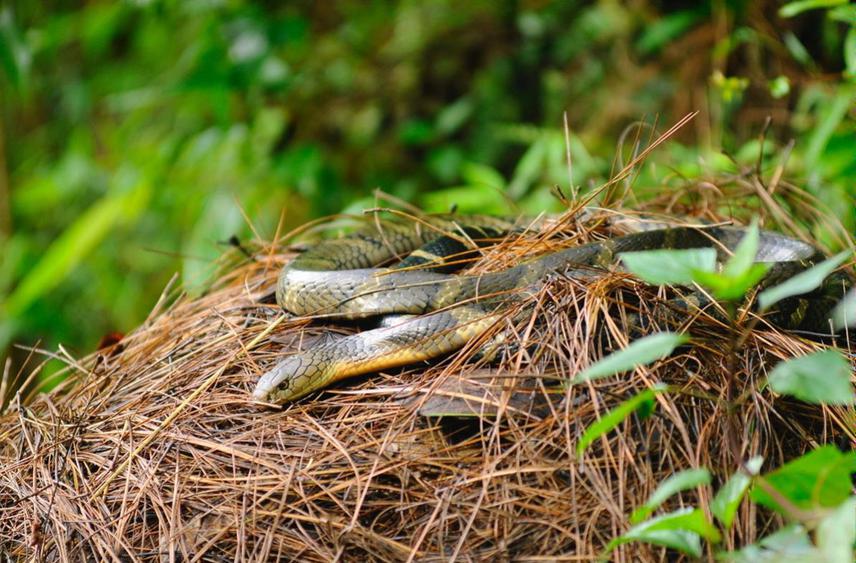Jignasu Dolia
Other projects
2 Jul 2018
Nesting Ecology and Conservation of King Cobras in the Himalayan State of Uttarakhand, India
• To protect and scientifically monitor King Cobra nests
Our aim is to study and conserve King Cobra nests in situ to try and boost the population of this vulnerable species.
• To map the local distribution of this snake in the Kumaon hills
We will aim to collect and collate distribution data for this snake, and also identify key factors that are likely to influence its distribution.
• To assess the threats faced by this venomous reptile
There is no reliable data on the threats faced by this snake, especially from the Himalayan foothills in northern India. Thus, our aim is to document and possibly quantify the different threats faced by India’s national reptile.
• To create greater public awareness regarding the role of this snake in the ecosystem
Our aim is to raise awareness, sensitize the local people and seek their cooperation for conserving this important, but potentially dangerous species.

Female King Cobra lying on top of her nest. © Jignasu Dolia
The main goal of this project is to build on our past efforts to conserve the King Cobra (Ophiophagus hannah) in the subtropical forests of Uttarakhand, northern India. We plan to combine ecological research and public awareness to achieve our primary goal – to conserve this apex predator and its habitat from human-induced disturbance. Involvement of local inhabitants will continue to remain a central part of our conservation strategy.
The fieldwork component of this project will be divided into three phases. The first phase will consist of locating and scientifically monitoring King Cobra nests. For those who may be unaware, the female King Cobra is the only snake in the world that builds an aboveground nest made from leaf litter. Nests will be located with the help of local informants and will be monitored until hatching. We will collect behavioural data of nesting females, if feasible. Automatic data loggers will be placed at nest sites to record nest/ambient microclimate. Once hatchlings emerge from a nest, we will measure the length/weight of each individual, prior to releasing them in the forest.
The second phase will consist of carrying out snake-awareness cum sensitization programmes in select village schools/colleges and NGOs. At each location, Jignasu Dolia (project PI) will deliver an hour-long audio-visual presentation via a projector to spread awareness on snakes in general (King Cobras in particular). The main goal of these programmes will be to not only present the audience with factually correct information on snakes, but to urge it to understand and respect these misunderstood and feared creatures. We will use a combination of mythological, ecological and ethical reasons to try and convince our audience to conserve snakes. Outreach material (such as posters, T-shirts, etc.) will also be distributed in the study area to try and ensure that the knowledge shared during these programmes is retained.
During the third phase of this project, we will conduct interview-based field surveys to collect data on the fine-scale distribution of this species, and to assess the local threats faced by this snake in the Kumaon Hills of Uttarakhand. Due to its rather elusive nature, chances of direct sightings of this enigmatic snake in the wild are relatively small. We therefore plan to use a combination of primary and secondary data to gather baseline information on this IUCN-listed vulnerable species, so that we are better equipped to conserve India’s national reptile and its habitat.